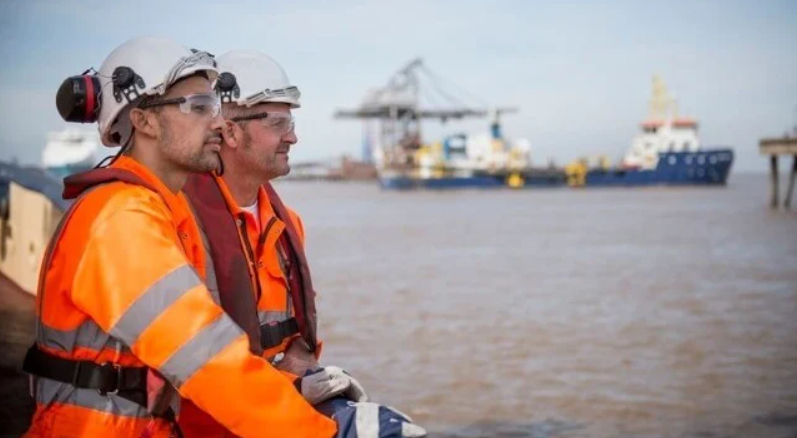The Suez Canal blockade from 24.3 until 29.03 following the stranding of the ultra-large container carrier EVER GIVEN caused a bottleneck of altogether almost 400 vessels in the East-West and West-East directions. Some vessels set course for Northern Europe ports, the top container ports being Le Havre, Antwerp, Rotterdam, Felixstowe, Bremerhaven and Hamburg.
Depending on schedules, before vessels reach the Port of Hamburg, they stop in other North Range ports. A possible bottleneck in later ports in the rotation will therefore increasingly dissolve.
Ships’ routes and schedules are determined by the shipowners. It is also up to them to decide whether they should now depart from regular routes, possibly diverting ships and omitting ports. So terminals are prepared for that.
The Port of Hamburg offers 275 berths for seagoing vessels, 40 of these being for mega-ships over 300 metres long.
Laytimes for mega-ships vary. These entirely depend on the volume of cargo being handled.
In the Port of Hamburg an average of 25 seagoing vessels arrive at and leave the port every day.
With laytimes sometimes lasing several days, up to 50 vessels – ULCCs, feeders and inland waterway vessels – can be in the port. Approx. 15 weekly liner services using the Suez Canal call at the Port of Hamburg.
With schedules unchanged, after the one-week blockade an additional 15 vessels on liner services would be set to arrive.
An additional 5-10 vessels – tramp ships – operate without fixed schedules or routes.
Thanks to the measures mentioned, these 25 additional ships are spread over a longer period, e.g. a week. Purely arithmetically, the additional number of ships call would last approx. three per day.
Following the resumption of traffic in the Suez Canal, a deferred peak in calls by ULCCs may be assumed as likely this and next week in the Port of Hamburg. To avoid ‘bottlenecks’, as the traffic control centre for the Port of Hamburg, the Nautical Centre exercises proactive traffic control. A bottleneck can occur on the Elbe. Should the port be subject to excessive load, vessels are requested to sail slowly and if required, to anchor in the German Bight.
Arrival and departure of seagoing vessels here depends on the availability of berths for unloading and loading them. Ships are shifted to produce the heaviest possible utilization of quayside facilities. Should waiting times be foreseen for ships, they receive timely notification. This facilitates just-in-time arrivals.
The HVCC is a coordination point privately operated by the Hamburg container terminals, primarily for optimizing terminal schedules for containership, feeder and inland waterway containership services.
In cooperation with the Nautical Centre for Container Terminals and Shipowners, it coordinates port arrivals/rotation, and post-clearance sailings. If the anticipated berth is occupied, the ship concerned anchors in the German Bight and only receives permission to approach the Port of Hamburg after consultation between the terminal, HVCC and the Nautical Centre.
Details of planned ship’s arrival during the next two or three days can be found 24/7 on https://www.hafen-hamburg.de/de/schiffe/eta . Ships can also be followed at any time on Vessel Tracker or other digital applications.
The HHLA and Eurogate terminals have for some time been operating with ship delays of two weeks – and sometimes considerably longer. The two major terminal operators have now had to contend with this state of affairs for months. Both have adjusted to it and are reacting flexibly.
Basically, since the beginning of this year barely a single vessel has reached the Port of Hamburg punctually. This all started last year, when production was being boosted again in the Far East/China following the first corona lockdown and demand for transport capacities rose sharply.
Additional factors were unfavourable weather conditions during the winter months, and Brexit at the turn of the year. On top of these came the Suez blockage to aggravate the situation – and it is currently impossible to predict precisely to what extent.
Delayed ships make control of the export cargoes to be shipped all over the world via Hamburg a special challenge. The later the ships arrive that really should be operating to a fixed schedule, the longer the export containers














